The wine windows in Florence, known as buchette del vino, have a fascinating history. They emerged in the 16th century during the Black Death pandemic, as a way for Florentine families to support the wine industry and conduct safe business transactions. These small hinged openings are a unique part of Florence’s heritage.
When you embark on a two-day journey in Florence, exploring these historical wine windows adds a touch of magic to your itinerary. Dating back to the 16th century, they offer a glimpse into Florence’s resilience and creative responses during difficult times. Visiting these architectural gems not only enriches your short stay but also immerses you in the city’s cherished winemaking tradition.
As you wander through Florence’s charming alleys and visit neighborhoods like Santo Spirito and San Frediano, you’ll stumble upon these hidden wine windows, each unveiling a piece of Florence’s history. Your two-day adventure becomes a harmonious blend of cultural discovery and savoring exquisite Tuscan wines. It’s a chance to connect with Florence’s essence, bridging its storied past with its celebrated wine culture.
Timeless Traditions: Unveiling the Legacy and Innovation of Florence’s Wine Windows
Florence’s wine windows, which date back to the 16th century during the Black Death, showcase the city’s resilience and innovative spirit. These unique architectural features, locally known as “buchette del vino,” were introduced by Florentine families as a response to the pandemic. They served as a smart solution to support local wineries while reducing the risk of contagion. These small, hinged openings were strategically installed in buildings throughout the city.
During the Black Death, these wine windows played a crucial role by allowing residents to access wine without direct contact, creating a safer transaction environment. Families could conveniently purchase their favorite Tuscan wines through these discreet openings, ensuring business continuity during a widespread health crisis.
As time passed, the tradition of wine windows in Florence continued to evolve, becoming an integral part of the city’s cultural and architectural heritage. Today, these charming windows are not mere relics of the past; they are vibrant reminders of Florence’s rich history. They continue to attract both locals and visitors, offering a unique perspective on the intersection of public health, commerce, and the art of winemaking in this iconic Italian city.
Where to find Florence wine windows
Exploring Florence’s wine windows is a fun adventure through its historic neighborhoods. You can find these hidden gems all over the city, especially in places like Oltrarno and the city center. As you wander around Santo Spirito and San Frediano, you’ll come across charming spots where these wine windows are still in business.
Counting all of Florence’s wine windows is a bit tricky because they’re scattered around, and not all of them are well-documented. Experts guess there are more than 150 wine windows in total, adding to the city’s cultural richness. But when it comes to the ones still in operation, you’ll usually find around 10 to 20 of them.
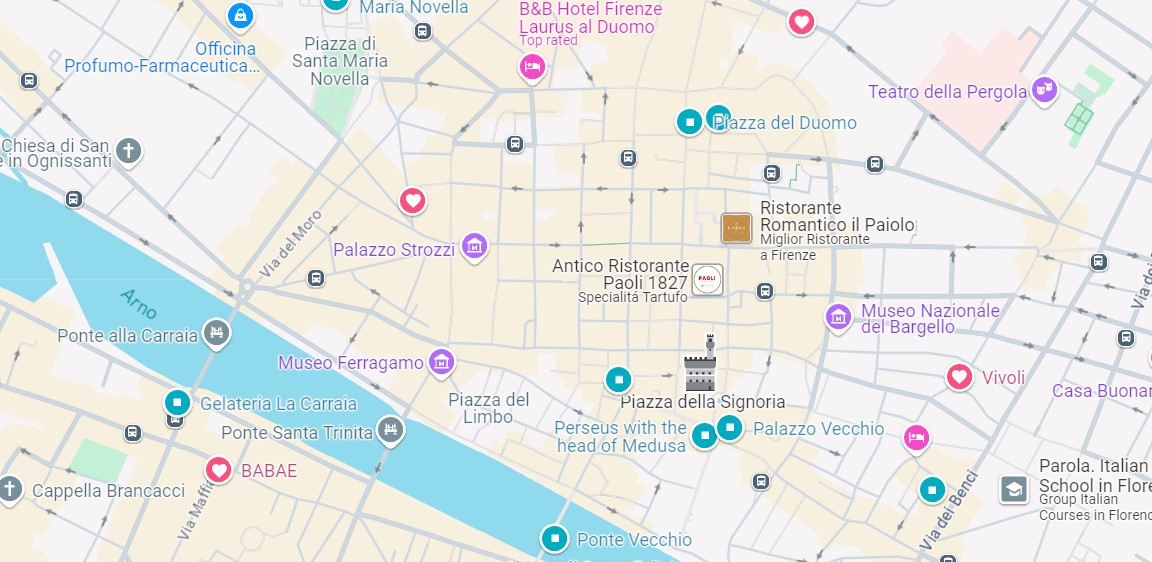
Wine windows Florence Map
Click the hyperlinks below to pop open the locations on your google maps. Save the location to make your own wine windows of Florence map and create your path!
Florence wine windows price
Florence’s wine windows come with different price tags depending on where you go and the type of place it is. Some may offer wine for just a few euros, while fancier spots with special or rare wines might cost you more. Usually, you’ll find most wine windows charging around 4 to 7 euros. To get the best deal and the wine that suits your taste and budget, explore different areas of Florence.
Florence wine window hours
As for the operating hours of Florence wine windows, they typically align with the opening hours of the establishments they belong to, such as wine shops, wineries, or osterias. Therefore, check the operating hours of each venue.
What is best wine window in Florence?
Deciding on the “top” wine windows in Florence is really a personal thing. It’s all about what floats your boat. That said, some popular spots like Osteria Belle Donne and Babae have made a name for themselves amongst visitors. They serve up good wine and give you that cozy, authentic Florence feel that makes sipping wine on the side of cobblestone even more enjoyable. So, it’s up to you to figure out which one vibes with your style and taste!
How do the wine windows in Florence work?
The windows are pretty simple actually. You will spot the small window on the outside of the restaurant. Usually there is a plaque, menu, or even a line of people that makes it clear that it’s purpose is as a “wine window”.
You go up to the window where either you ring a bell for less busy windows, or there is a waiter that is tending the window. You place your order – typically as simple as I want a red, white, orange, glass of wine – and then you pay.
They accept cards, so if you have the tap feature on your card you can be up to the window, request the color of wine, tap and be on your way.
As for the glasses, some had trays outside, or you can take it inside the restaurant and drop it off at the bar.
What wine is Florence known for?
Florence is famous for its exceptional Chianti wine, primarily made from Sangiovese grapes. Chianti Classico, a favorite among wine enthusiasts, is just one of the many Tuscan wines with unique flavors.
Chianti, a true Tuscan classic, boasts a rich history dating back to the 13th century. It originates from the stunning Chianti region in central Tuscany, known for its rolling hills and outstanding vineyards. The official designation of the Chianti Classico region in 1716 marked a significant milestone in its evolution, with Sangiovese grapes contributing to its distinctive taste.
What makes Chianti famous is its robust and flavorful profile, often featuring hints of cherries, plums, and a touch of earthiness that captures the essence of Tuscany. The Sangiovese grapes and traditional winemaking methods create this unmistakable flavor. Chianti is also renowned for its winemaking traditions and iconic straw-covered fiasco bottles symbolizing its esteemed status.
Chianti’s rise to stardom occurred in the mid-20th century when it became an emblem of Italian wine excellence. Its global recognition was solidified with the Denominazione di Origine Controllata (DOC) status in 1967, signifying adherence to strict quality winemaking rules. Chianti Classico, celebrated for its exceptional quality, earned the prestigious Denominazione di Origine Controllata e Garantita (DOCG) title in 1984.
Notable producers like Castello di Brolio, Antinori, Ruffino, and Castello Banfi craft outstanding Chianti wines, offering a taste of the region’s diversity. These brands present a range of Chianti styles, from the classic Chianti Classico to modern interpretations, showcasing the wine’s versatility and enduring popularity. Exploring different Chianti labels is like embarking on a flavorful journey through the nuances of this iconic Italian wine.
Frequently Asked Questions about Florence’s Wine Window
- How Much Does Wine from Florence Wine Windows Cost? Expect to pay between 4 to 11 euroes depending on the type of wine you are purchasing.
- Florence Wine Window Operating Hours: Most will have hours from lunch to dinner as linked with the establishment that owns the window.
- Where to Find Florence Wine Windows: You can discover Florence’s wine windows all over the city, especially in places like the Oltrarno district and the city center. When you explore neighborhoods like Santo Spirito and San Frediano, you’re likely to come across cozy spots where these historic wine windows are still doing their thing.
- How Do Florence Wine Windows Work? Florence wine windows are as they sound – smaller windows on the side of the building. You either ring a bell or there is a waiter tending the window. You request what you want (usually there is a menu outside the window), you pay at the window, and you receive your wine glass through the window.
- What Wine is Florence Famous For? Florence is particularly known for producing Chianti wine, mainly made from Sangiovese grapes. Chianti Classico, a specific type of Chianti produced in a designated region, is a well-known wine associated with Florence. But Florence also offers a variety of other Tuscan wines, each with its own unique flavors.
- How Many Wine Windows Are in Florence? Pinpointing the exact number of wine windows in Florence can be a bit tricky. But estimates suggest there are over 150 of them still around. They’re scattered throughout the city, adding to Florence’s rich history and culture.


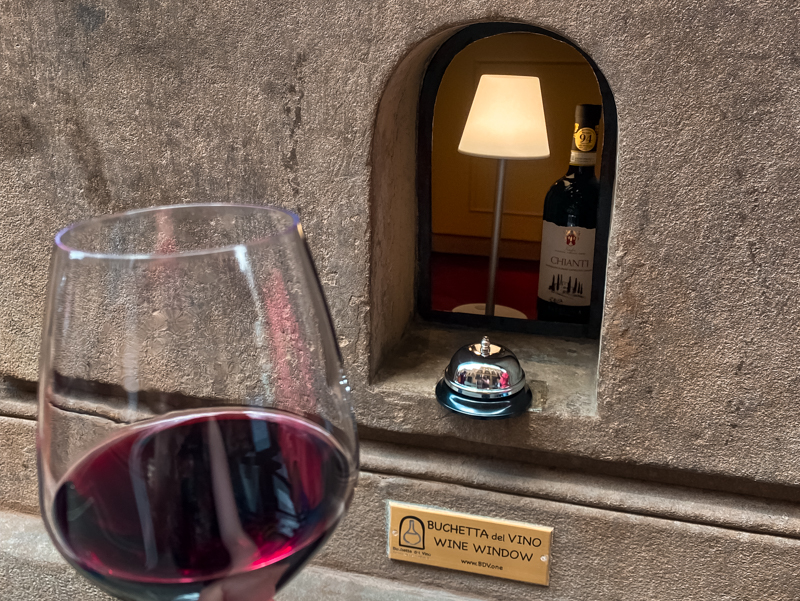
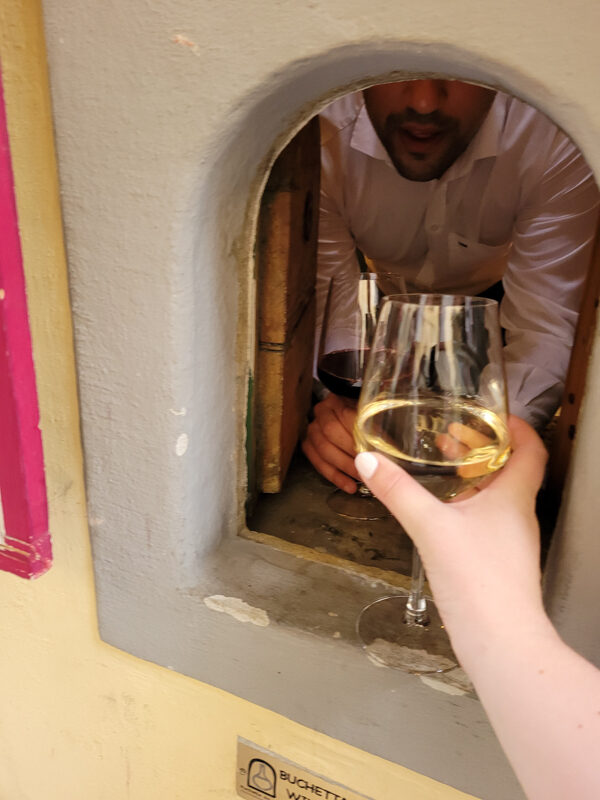
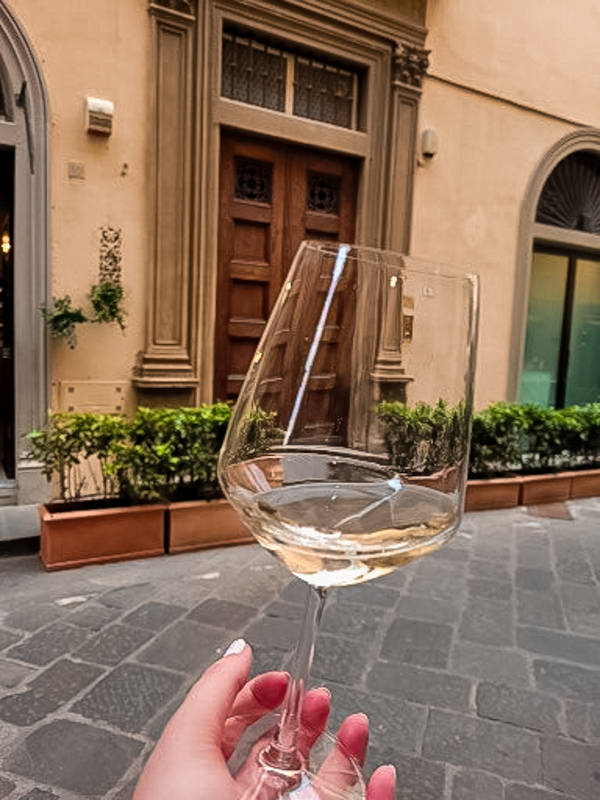
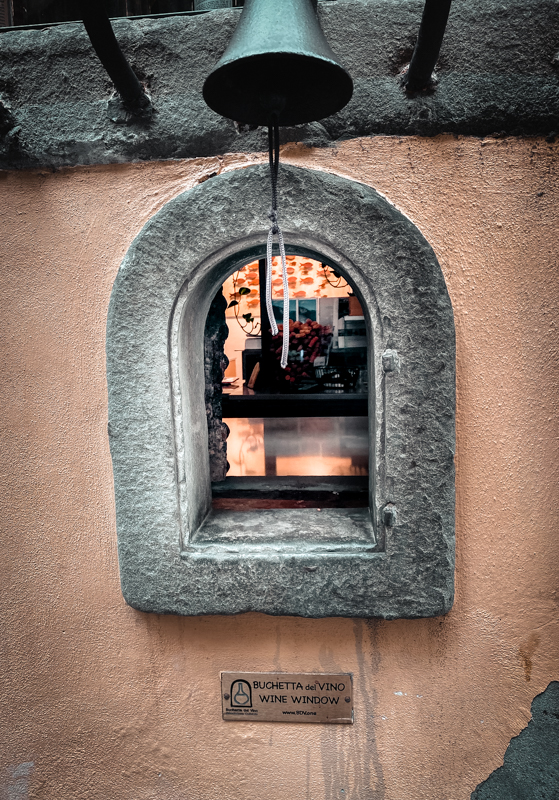
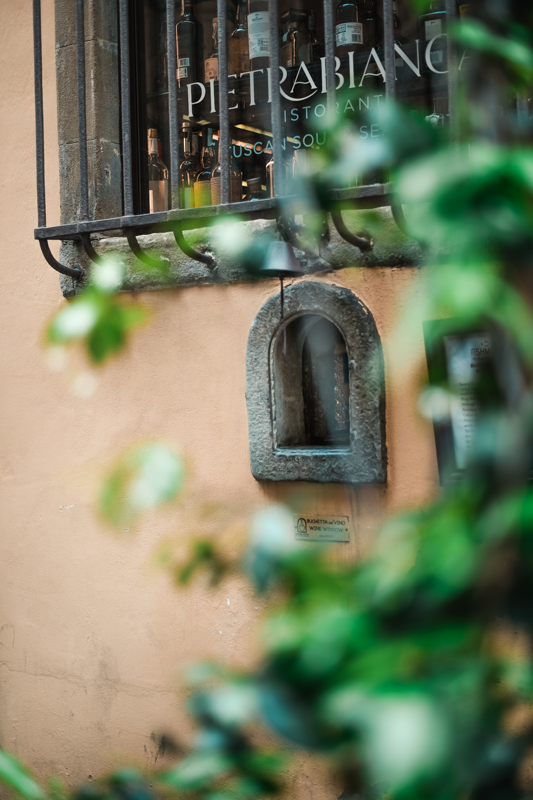
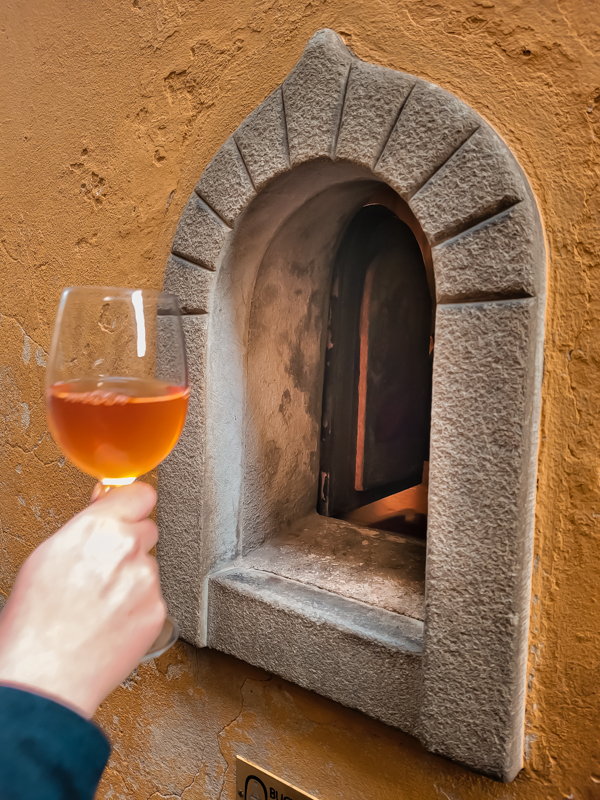

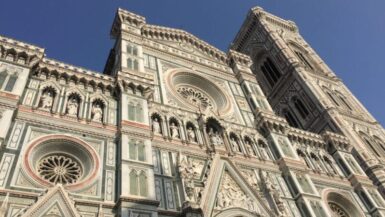
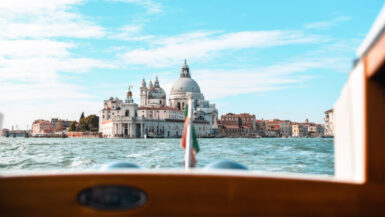

Leave a reply